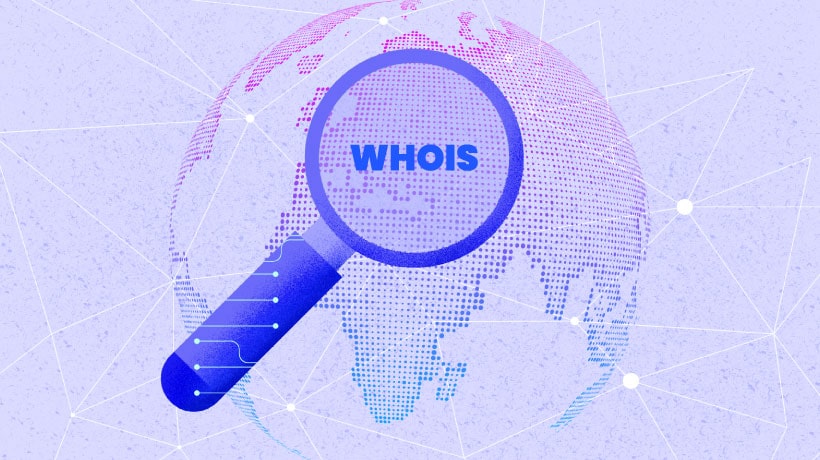Unlocking the WHOIS Mystery: Streamlined Domain Data Access
 Fahad Anyit
Fahad Anyit
What is Whois?
WHOIS, the internet's open book, is a powerful protocol and system designed for revealing vital information about online resources. Imagine having a personal resource detective with WHOIS tools at your fingertips, capable of unveiling the hidden details of domain names, IP addresses, and even those enigmatic Autonomous System Numbers (ASN). Every single day, countless individuals, businesses, organizations, and governments register domains, and within the vast realm of WHOIS data, they willingly share their contact info - names, addresses, emails, phone numbers, and more!
History of Whois
In the late 1960s, the Massachusetts Institute of Technology's AI Laboratory developed the Incompatible Timesharing System (ITS), where computing advancements thrived. One utility, 'who,' displayed a list of active usernames and terminal names. Later, in 1971, 'finger' was added, expanding the utility with user information. By 1977, the term 'WHOIS' was coined to describe this function. Over time, WHOIS became the prevailing term, marking the evolution from humble beginnings on the ITS system.
WHOIS, born in 1982 as a directory service for ARPANET users, has come a long way. Expanding to cater to domain name registrants, law enforcement, and individual users, WHOIS adapted through consensus policies RFC 920. ICANN inherited the protocol in 1998, enhancing it further in 2016 with gTLD Registration Directory Service obligations. Amid debates on privacy and data accuracy, ICANN continues to refine WHOIS, finding the right balance in an ever-changing digital landscape.
In terms of domain WHOIS data, ICANN does not store it. Instead, all data resides in individual registrar or registry databases, including the WHOIS escrow at Iron Mountain. This escrow serves as a recoverable repository in case of catastrophic failure or registrar disputes. Since there's no single WHOIS database, records may vary based on retrieval methods or sources. WHOIS files from queries are simply text outputs of database queries.
Domain Whois Fields
The WHOIS record comprises multiple blocks, each serving a distinct purpose and referring to various parties or components associated with the domain name.
Domain Status
Status codes within WHOIS records are registry-specific instructions that can differ across different registries, serving particular purposes for each.
Registrar
In Generic Top Level Domain (gTLD) WHOIS records, the registrar field is vital, but it can be tricky to identify the registrar's actual name. Some registrars have multiple names or use different names for their operations (DBA), leading to confusion. Additionally, some registrars use their website URL as the name, which might not match their official corporate name.
Name Servers
Nameservers are fundamental components in WHOIS records, enabling domain names to be linked to websites. However, they can vary in format and accuracy. It's important to note that nameservers can be forged in WHOIS records. Typically, each record requires at least two nameservers, though some domains may have more.
Registrant, Administrative, Technical, and Billing Contact
For the Registrant section, only the name and postal address are required, but WHOIS records may include additional details such as email and phone numbers, which are not obligatory to be accurate. For Administrative and Other Contact Blocks, most fields are typically mandatory, ensuring the provision of accurate contact information. As ICANN mandates the public availability of contact information for domain owners and managers, including mailing addresses, phone numbers, and email addresses which raises privacy concerns. Some registrars offer private registration services, showing their contact information instead of the registrant's. However, this privacy is not always guaranteed, as legal requirements may force the release of private information.
Types of Whois lookup data models
There are primarily two types of WHOIS lookup data models:
Thick WHOIS Model In the Thick WHOIS model, the domain registry maintains and stores all the domain registration data, including contact information, name servers, and other related details. When performing a WHOIS lookup, the information is directly obtained from the registry's WHOIS database, providing comprehensive domain details in a single query.
Thin WHOIS Model In the Thin WHOIS model, the domain registry only stores minimal data for a domain, such as the domain name server (DNS) and the registrar's contact information. The actual contact details of the domain owner, such as registrant, administrative, technical, and billing contacts, are stored separately by the domain registrar. To access complete domain details, additional WHOIS queries are required, separately querying the registrar's WHOIS server.
These two data models define how WHOIS information is managed and provided by registries and registrars, and their usage can vary based on policies and practices followed by individual domain registries and registrars.
DNS and WHOIS
A Domain Name lookup, commonly referred to as WHOIS, retrieves comprehensive domain registration data, including essential details about the domain owner. It is crucial to differentiate between a Domain Name lookup and a Domain Name Server (DNS) lookup. While WHOIS provides domain registration information, a DNS lookup retrieves the IP address associated with a specific Domain Name.
Whois Alternatives
For more than 35 years, the WHOIS protocol has been the primary means to access domain name registration data. However, the internet community has recognized certain limitations which are as follows:
No standardized format.
Lack of support for internationalization.
Inability to authenticate users.
Lookup-only abilities and no search support.
Lack of standardized redirection or reference.
No standardized way of knowing what server to query.
Inability to authenticate the server or encrypt data between the server and client.
RDAP, or the Registration Data Access Protocol, emerges as a groundbreaking creation by the technical community within the Internet Engineering Task Force (IETF). With its sights set on eventually replacing the WHOIS protocol, RDAP brings an array of benefits to users, granting access to real-time registration data. Its design specifically targets the limitations experienced with WHOIS, promising a more efficient and responsive domain data access experience.
Ready to perform WHOIS lookup?
Understanding WHOIS is crucial because it provides valuable insights into domain ownership and registration data. However, obtaining this information can be challenging due to inconsistent response formats and access restrictions imposed by various domain registrars and registries. Navigating the complexities of WHOIS requires expertise and efficient tools. At WhoisFreaks, we've simplified the process for you, offering seamless access to comprehensive WHOIS data through APIs, and making domain research and management a breeze. Trust us to provide accurate and up-to-date information, empowering you with the knowledge needed to make informed decisions about domain assets and online presence.
Subscribe to my newsletter
Read articles from Fahad Anyit directly inside your inbox. Subscribe to the newsletter, and don't miss out.
Written by
